What Baking Tools Are Needed to Make a Cake
It seems you don’t need much to make a cake: a baking dish, a whisk, and a couple of bowls to mix the cake dough and whip the cream. In reality, it isn’t that simple. For example, it’s difficult to beat the whites into stiff peaks with an ordinary whisk, and if you don’t sift your flour through a strainer, you are unlikely to get a proper sponge cake.
5-Minute Crafts would like to tell you about what you might need to make and decorate a cake at home.
You won’t necessarily use all the tools. Some tools will be helpful for beginners, others will be relevant to those who want to create complex, sophisticated cakes.
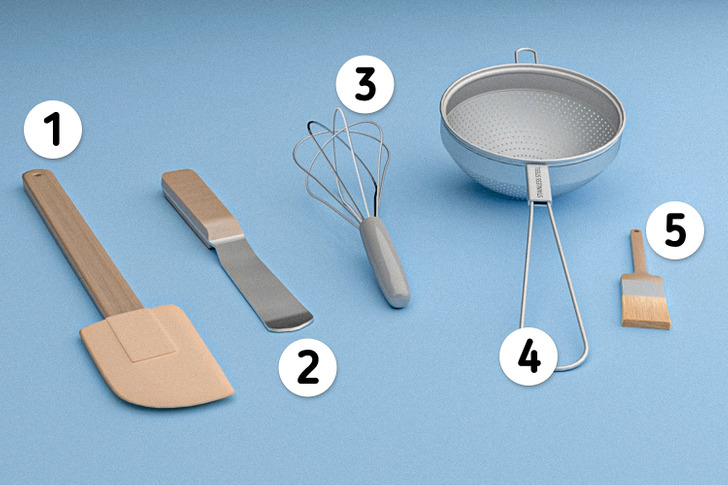
- Spatulas made of food-grade plastic or silicone, easily scrape off all the icing or dough from the bowl without residue, allow you to carefully remove the finished soufflé or mousse from the mold, and also mix the ingredients without disturbing their consistency (for example, if you need to combine whipped whites and yolks, while keeping them “airy”). Spatulas can withstand temperatures up to 390°F, they are easy to wash, and they are durable. To make simple desserts, it’s enough to have 2-3 spatulas in different sizes.
- An offset spatula helps spread the icing or frosting over the top and sides of the cake, as well as the batter or frosting inside the pan. This is a professional tool for confectioners. Beginners often use regular spatulas for the same tasks, although they are not as convenient. Offset spatulas come in different sizes. But one large spatula, one small spatula, and at least one curved cake spatula will suffice to get you started.
- A whisk in the classic form has a teardrop shape, as shown in the picture above. You will need it for recipes where you have to beat something or mix it by hand, but it can’t replace a mixer completely. Unlike other models, a classic whisk is easy to clean by gathering the loops together and wiping them with a sponge. It’s better to choose one where the loops are made of stainless steel and are firmly connected to the metal handle, and also without a silicone coating that will peel off over time.
- A sieve is useful primarily for sifting flour and saturating it with oxygen, which is important when making cakes from different types of dough. It’s convenient to have 2 sieves: a mechanical one in the shape of a cup and a small kitchen sieve to sprinkle ready-made desserts with powdered sugar or cocoa powder.
- A brush looks like the one used by artists. It can also be considered a professional tool for confectioners: with the help of different brushes, they paint desserts, create patterns, and apply inscriptions. A brush can be flat (as in the picture above) or round (for drawing tiny details), and it can vary in size and in the materials its bristles are made from.
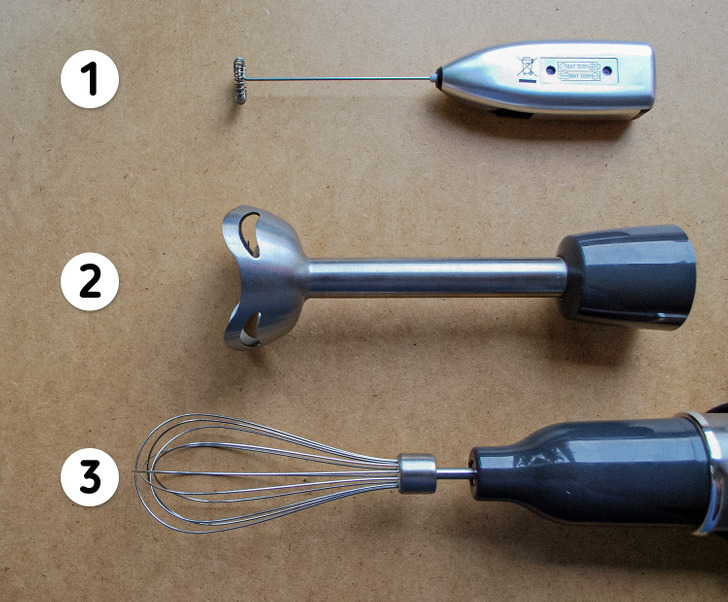
- An electric milk frother might seem unnecessary, but it can be handy if you need to whip a little cream, a yolk, or white for a recipe.
- An immersion blender with an attachment called a “stick blender” allows you to quickly puree fruits and berries, mix ingredients for icing and ganache, make fruit sauces, and grind berries with sugar.
- An immersion blender with a whisk attachment may not be a complete replacement for a stand mixer but it will help out if you need to beat whites to stiff peaks, mix a thick buttercream, make a soufflé, or mix ingredients for batter.
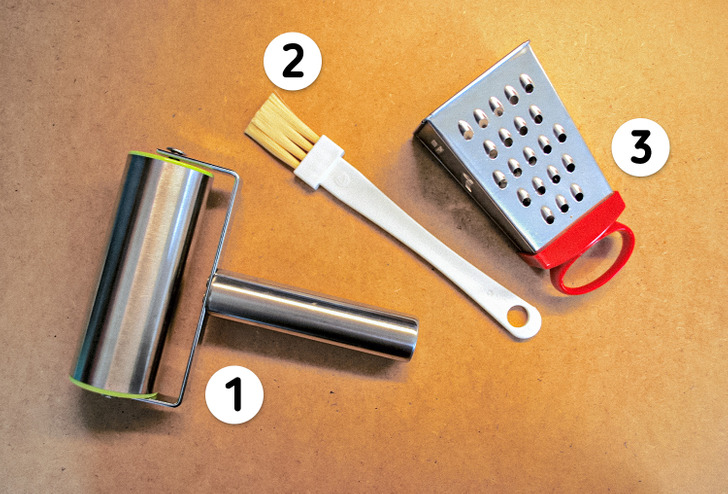
- A rolling pin with a handle can be a more modern replacement for an ordinary rolling pin, especially if you have a small kitchen or limited space to roll out the dough. It’s better to choose a stainless steel model: it’s easy to clean, it doesn’t absorb odors, and dough doesn’t stick to it because of its smooth surface.
- A pastry brush is useful for brushing pastries with yolk, spreading butter evenly in a mold, or soaking cakes in milk or syrup.
- A small stainless steel grater is handy for grating a small portion of chocolate, cinnamon, or nuts. The more holes and the closer they are to each other, the more of an ingredient you can grate at a time.
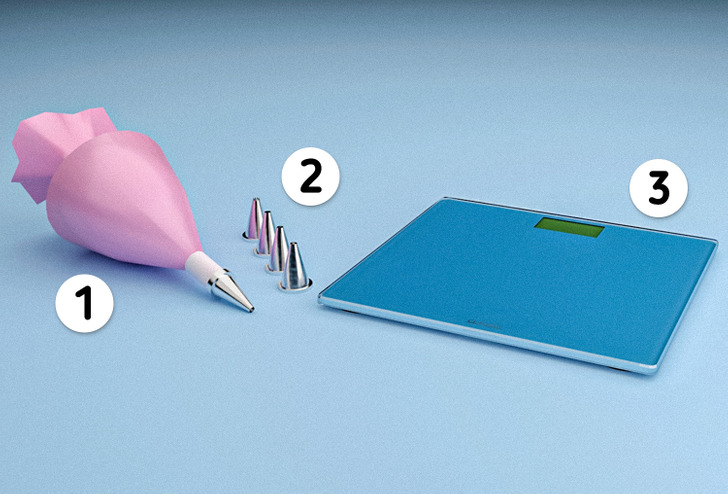
- A pastry bag is used to evenly spread icing or frosting on a cake layer, moving from the center of the cake to the edges in a spiral. If the frosting is not thick, it may not be necessary to spread it out with a spoon or spatula, and you can immediately cover it with another layer. For those who plan to use different frostings in one cake, it’s good to have a set of bags in different sizes on hand (it’s better to choose reusable ones).
- Pastry nozzles, which are attached to pastry bags, allow you to decorate cakes and pastries, and form meringues or cookies. Nozzles vary in shape and diameter, which is reflected in the pattern they create. Usually, the number and name are indicated at the bottom of a nozzle. The most common nozzles are a star nozzle (the tip has several slits), a closed star nozzle (the slits are similar to the previous tip, but are curved and connected), a French star nozzle (similar to a star nozzle but the tip has many small sharp points), and a round nozzle (a standard round tip).
- An electronic kitchen scale takes the exact measurement of ingredients which helps you avoid mistakes during baking. A modern electronic kitchen scale allows you to easily and quickly determine the exact weight of an ingredient without the weight of the container it is in. This is especially important in recipes for sweets, where you won’t be able to make dough, frosting, or soufflé if the dosage is inaccurate.
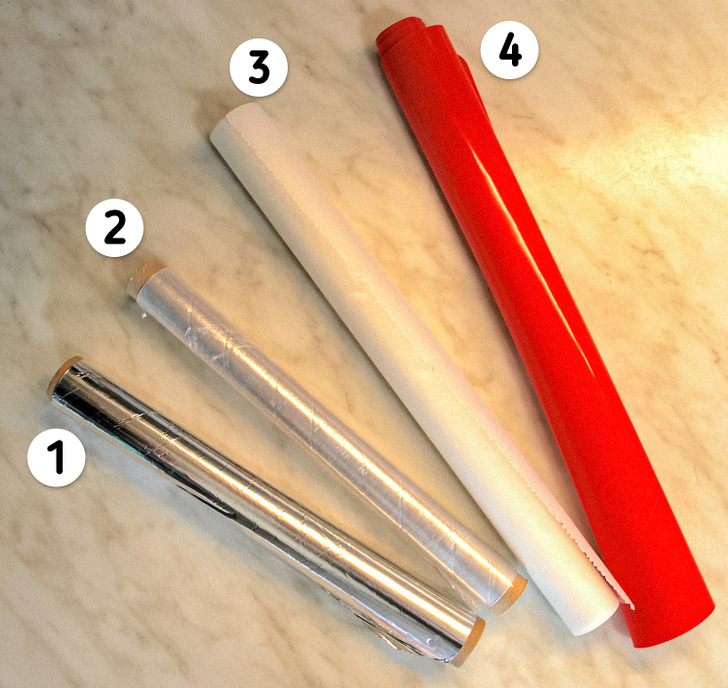
1. Aluminum foil can be used as a bottom for pastries during baking or for wrapping finished baked goods. In some cases, if you cover the cake or cake layers with foil before baking, they will not burn on top and will bake evenly.
2. Plastic wrap is used for packing something or tightly covering a bowl of dough, providing it with the necessary conditions to rise or simply not dry out. Nowadays, there are other eco-friendly alternatives, such as reusable plastic containers or lids that can be used to cover bowls.
3. Parchment paper is used as a bottom for baking dough products, especially sponge cakes. Dough doesn’t stick to it. This paper can be used to lay sponge cake layers on before cooling them or storing them in the fridge.
4. A silicone baking mat is convenient for rolling out dough. Dough doesn’t stick to silicone, while mats often have markings that suggest the diameter, length, and width of a cake. The remaining flour or dough residue is easy to remove with a damp cloth or with water.
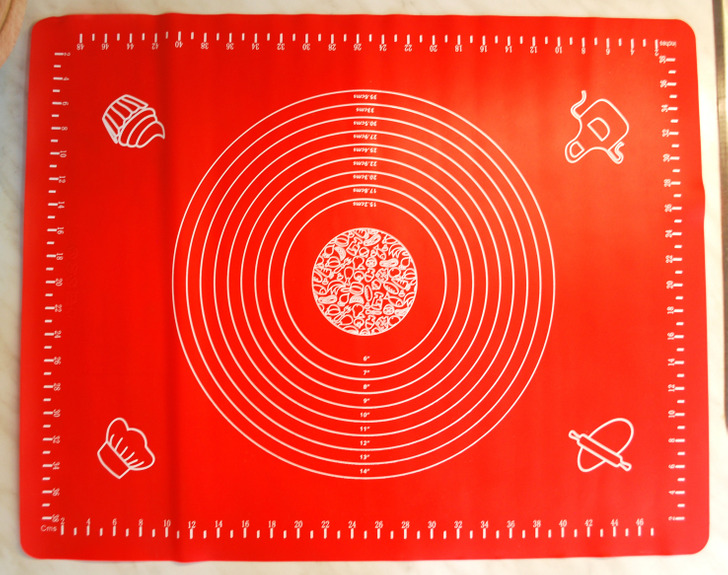
The rolled out dough can be put into the oven directly on the mat because a silicone mat is designed for high temperatures (up to 500°F).
A silicone mat doesn’t absorb odors, and it can be rolled up for compact storage. And you can always have a clean work surface when working with dough or creating cake decorations like, for example, if you are sculpting something from fondant.
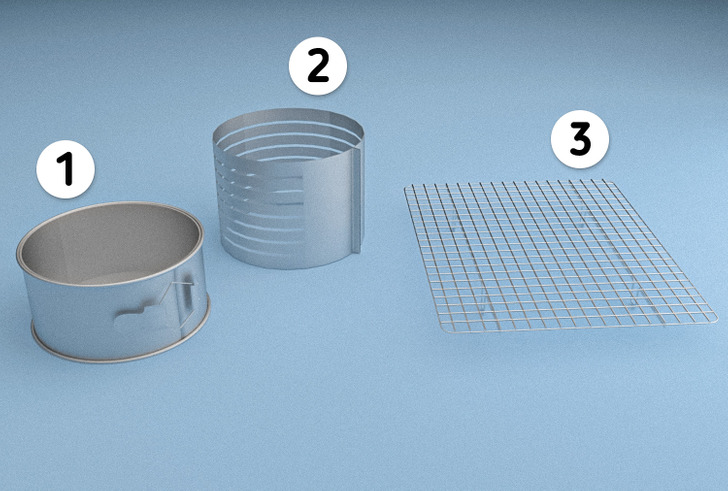
- A cake pan makes the process of removing a cake after baking it in the oven easier and can be used to assemble a cake in order to obtain a thick and even layer of frosting, mousse, or soufflé between the cake layers during the cooling process. It’s good to have a few different baking pans, including square ones.
- A cake slicer helps cut a sponge cake into several even and thin cake layers. It helps experienced pastry chefs a lot, but if you don’t have one, use a serrated knife or the thread trick.
- A cooling rack is needed to cool baked goods evenly and correctly after the oven. It’s also useful if you’re decorating your cake with icing and you don’t want the icing to build up around the edges.
What else
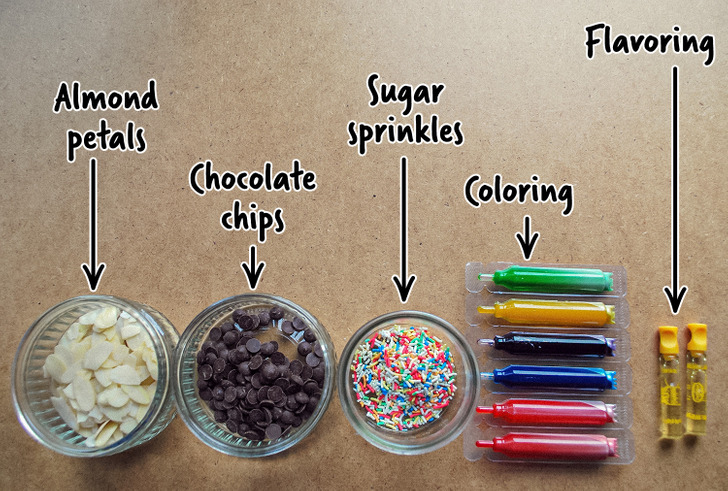
- Food coloring, flavoring, chocolate chips, almond petals, and various ready-made cake decorations
- Bowls in different sizes for mixing frosting, sauces, and dough. Pay attention to those that have high sides so that the liquid mass stays within the bowl when mixed. It’s better to give preference to those made of stainless steel since they don’t absorb odors.
- Measuring cups and measuring spoons (Don’t confuse them with a kitchen scale. If a scale helps determine the weight of dry foods, measuring cups and spoons are needed to measure liquid foods).
- A cake turntable makes it easy to apply an even layer of frosting or icing on the top and sides of a cake.
- A stand mixer (it will mix butter and sugar perfectly and always beat egg whites to stiff peaks).
- Gloves for working with frosting and cake decorations (and anything else that doesn’t require heating before serving)
- A glass baking pan (suitable for making tiramisu and similar desserts)
- A thermometer to monitor temperatures during the processes where it is critical, like melting chocolate to the temperature necessary to make a glaze
- A paring knife for cutting the berries and fruits you’ll use as cake decorations